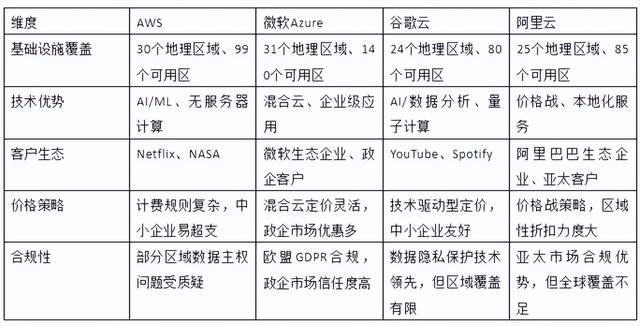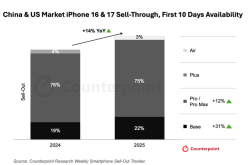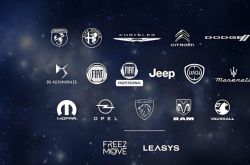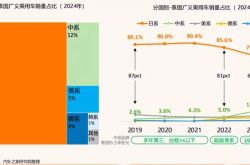Microsoft, Google, and Alibaba Cloud Converge on Amazon AWS: A Dynamic Game of Offense and Defense Among Cloud Titans
![]() 04/17 2025
04/17 2025
![]() 695
695
By 2024, the global public cloud market is projected to exceed $600 billion, with Amazon Web Services (AWS) maintaining its dominant position with a 32% market share. AWS boasts an annual revenue of $120 billion, marking a 20% year-on-year increase. As a trailblazer in the cloud computing industry, AWS has fortified an unassailable competitive edge through its extensive global infrastructure, comprehensive product portfolio, and relentless technological innovation.
However, the market landscape is subtly shifting. Microsoft Azure is swiftly gaining ground with an average annual growth rate of 30%, while Google Cloud, leveraging breakthroughs in AI and data analytics, is steadily increasing its market share. Alibaba Cloud, meanwhile, is expanding its influence in the Asia-Pacific market through aggressive pricing strategies and localization efforts. Additionally, Snowflake's ascendancy in the cloud-native database realm and Cloudflare's innovations in edge computing are further encroaching on AWS's niche markets. In this marathon-style competition, AWS is confronted with unprecedented challenges.
AWS's 'Triple Moat': Scale, Technology, and Ecosystem
1. Scale Barrier: 'Global Density' of Infrastructure
AWS's core competitiveness is epitomized by the global density of its infrastructure. As the pioneering cloud service provider to deploy global data centers, its infrastructure network not only serves a vast geographic footprint but also leverages economies of scale to create an unparalleled cost advantage. This high-density layout reduces bandwidth and operational costs while establishing a formidable barrier to entry. Latecomers aiming to catch up must invest heavily in capital and time, inherently shielding AWS in the market share battle.
2. Technology Depth: 'Innovation Inertia' of Full-Stack Capabilities
On the technological front, AWS's first-mover advantage has enabled it to amass full-stack service capabilities. Its comprehensive product matrix, spanning from underlying computing to top-tier industry solutions, caters to the diverse needs of customers ranging from startups to large enterprises. This technological moat is not only broad in service categories but also robust in continuous technological iteration. Through sustained R&D investment, AWS has cultivated an 'innovation inertia', enabling it to swiftly respond to market demands in cutting-edge fields like AI and serverless computing, rather than merely following trends.
3. Ecosystem Stickiness: 'Collaborative Network' of Customers and Partners
AWS's third moat arises from its extensive ecosystem of customers and partners. The deep reliance of global top-tier enterprises and developers fosters a self-reinforcing positive cycle within its ecosystem – more customers attract more developers, and more developers further enrich the service ecosystem. This stickiness ensures the stability of existing businesses while raising the cost of user migration through ecosystem synergies. Even if competitors introduce more price-competitive products, enterprises must weigh the hidden risks and costs of replacing the entire technology stack, which underscores AWS's most intangible barrier.
Undercurrents: Three Growth Bottlenecks
Despite AWS's success, several hidden issues persist. Firstly, its pricing system is complex, involving various models such as pay-as-you-go, reserved instances, and usage-based billing, which can lead to overspending by small and medium-sized enterprises. This 'maze of billing rules' deters many SMEs.
Secondly, AWS's response to customized services is sluggish. Over-reliance on standardized solutions hinders its ability to swiftly and flexibly address complex customer needs. This 'one-size-fits-all' approach falls short of meeting the diverse requirements of enterprise-level customers.
Lastly, compliance controversies pose a significant challenge. Frequent issues regarding data sovereignty in certain regions have raised concerns among customers about AWS's data security and compliance. This 'trust crisis' not only tarnishes its brand image but also undermines its competitiveness in emerging markets.
AWS's declining market share is inextricably tied to the intensifying industry competition. Microsoft Azure continues to expand its market share, leveraging its deep roots in the government and enterprise market and hybrid cloud advantages. Google Cloud maintains its leadership in AI and data analytics, attracting a cohort of technology-driven enterprise customers through innovation.
In regional markets, Alibaba Cloud has outpaced AWS in the Asia-Pacific region through pricing wars and localization strategies. Snowflake's rise in the cloud-native database field and Cloudflare's breakthroughs in edge computing have further eroded AWS's niche markets.

Confronted with multiple challenges, AWS stands at the crossroads between its 'comfort zone' and the 'line of change'. To sustain its industry-leading position, AWS must undertake comprehensive adjustments in its technology roadmap, pricing strategy, compliance capabilities, and ecosystem construction.
The rationale behind AWS's technological breakthroughs essentially involves 'trading R&D for barriers' – by consistently investing in underlying technologies, it aims to build differentiated capabilities in cutting-edge areas like chip architecture and quantum computing. While this strategy can consolidate its long-term technological leadership, the risks are apparent: high R&D investments may dilute short-term profits, and the commercialization cycle of technological achievements is fraught with uncertainties. If technological iterations fail to align precisely with market demands, the first-mover advantage may transform into a 'technological burden'.
In response to the rise of players in vertical fields, relying solely on in-house products has become inadequate to address diverse needs, necessitating the opening of interfaces and the introduction of third-party services. This shift can alleviate the pressure of user churn caused by ecosystem closure and amplify platform value through ecosystem synergies. However, an imbalance between openness and control may lead to chaos in service standards and even weaken AWS's dominance in core scenarios.
The Next Decade: The Era of 'Ecological Colonization' in Cloud Computing
AWS's challenges underscore the ultimate competitive logic of the cloud computing industry – a transition from a single resource provider to a full-stack ecosystem enabler. As Microsoft refactors productivity with 'cloud + end', Google reshapes data value with AI, and Alibaba Cloud erodes market share through regionalization, AWS's scale advantage may gradually diminish. Whether AWS can establish technological barriers in frontier fields such as self-developed chips, quantum computing, and green energy will determine its evolution from an 'infrastructure giant' to an 'operating system for the intelligent era'.
The next chapter of the cloud war is destined to be a showdown between ecosystems.








